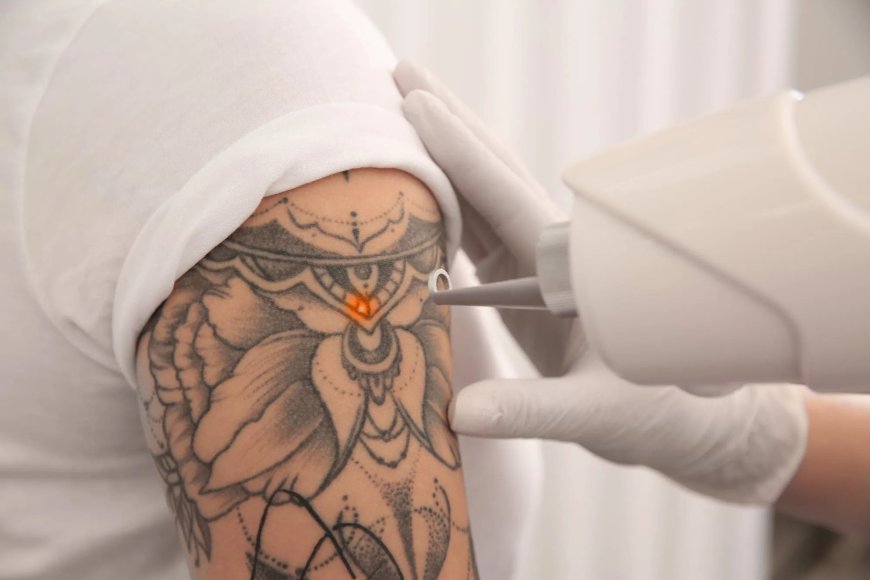Is Laser Tattoo Removal Permanent: Understanding Lasting Results in Dubai
The Enfield Royal Clinic is providing Best Laser Tattoo Removal in Dubai . It is safe, FDA-approved procedure, requires only 4-5 sessions to give a clear skin.

Laser tattoo removal is a popular method used to eliminate unwanted tattoos, but one common question that arises is whether the results are permanent. Understanding the mechanics of laser tattoo removal and the factors that influence its long-term effectiveness is crucial for anyone considering the Tattoo Removal Dubai.
How Laser Tattoo Removal Works
Laser tattoo removal involves using high-intensity laser beams that target the tattoo ink beneath the skin’s surface. The laser breaks down the ink particles, which are then absorbed and eliminated by the body’s immune system. Different types of lasers, like Q-switched lasers, are often employed to handle various ink colors and tattoo depths. This method is considered one of the most effective ways to remove tattoos and offers excellent precision.
Permanency of Results
While laser tattoo removal can lead to significant fading or complete removal of a tattoo, several factors affect whether the results are truly permanent.
Tattoo Color and Ink Composition
One of the key determinants in how well a tattoo responds to removal is the color and type of ink used. Black ink, for instance, tends to be the easiest to treat with laser technology. However, other colors, such as green and blue, may require more sessions and might not fully disappear in some cases. The composition of the ink also matters, as certain pigments are harder to break down than others, influencing the permanence of the result.
Depth of the Tattoo Ink
Tattoos that are inked deeply into the skin often pose a challenge for laser removal. Ink that is deposited closer to the surface tends to break down more easily, while deeper tattoos may require additional treatments to achieve significant results. The depth at which the tattoo is placed can therefore impact the effectiveness of laser removal.

Skin Type and Healing Response
Every individual’s skin reacts differently to laser treatments. Factors such as skin type, pigmentation, and overall health play a role in the healing process. People with lighter skin may experience faster and more effective results compared to those with darker skin, as the contrast allows the laser to target the ink more efficiently. The body’s immune response, which aids in clearing the broken-down ink particles, also impacts the removal process.
The Number of Sessions Required
The number of sessions needed for complete removal depends on various factors, such as the tattoo's size, color, and depth. Some tattoos may require only a few sessions, while others may take more time. Generally, multiple treatments spaced several weeks apart are needed to gradually fade the tattoo. Over time, with each session, the ink is broken down further, and the results become more permanent.
Time Between Sessions
It’s essential to give the skin enough time to heal between laser treatments. Typically, sessions are spaced 6-8 weeks apart to allow the body to process and eliminate the ink effectively. Rushing the process may not only prolong the total time needed but also hinder the chances of achieving complete removal. The body’s immune system must have adequate time to remove the ink after each session for lasting results.
Long-Term Results
In most cases, once a tattoo is sufficiently removed with laser treatment, the results are permanent. However, the quality of removal can vary. Some tattoos, especially those with stubborn pigments or those that were professionally done with deep ink placement, may not fully vanish. Fading is the most common outcome for tattoos that don't completely disappear. In such cases, the remaining ink is often significantly lighter and less noticeable.
Maintaining Skin Health
Even after a successful tattoo removal procedure, it’s important to maintain healthy skin to support the body's ability to eliminate remaining ink. Healthy skin promotes better healing, improves immune function, and reduces the risk of any scarring or skin irritation. Taking good care of your skin post-treatment ensures the best possible long-term outcome.
Conclusion
Laser tattoo removal can provide permanent results, especially when the tattoo is shallow, light in color, and responds well to the treatment. However, the permanence of removal is influenced by several factors, including ink color, tattoo depth, and the body’s healing process. While most people experience satisfactory and lasting results, some tattoos may require more time or multiple sessions to fully disappear. Understanding the process and having realistic expectations will help anyone undergoing laser tattoo removal in Dubai achieve the best possible outcome.
